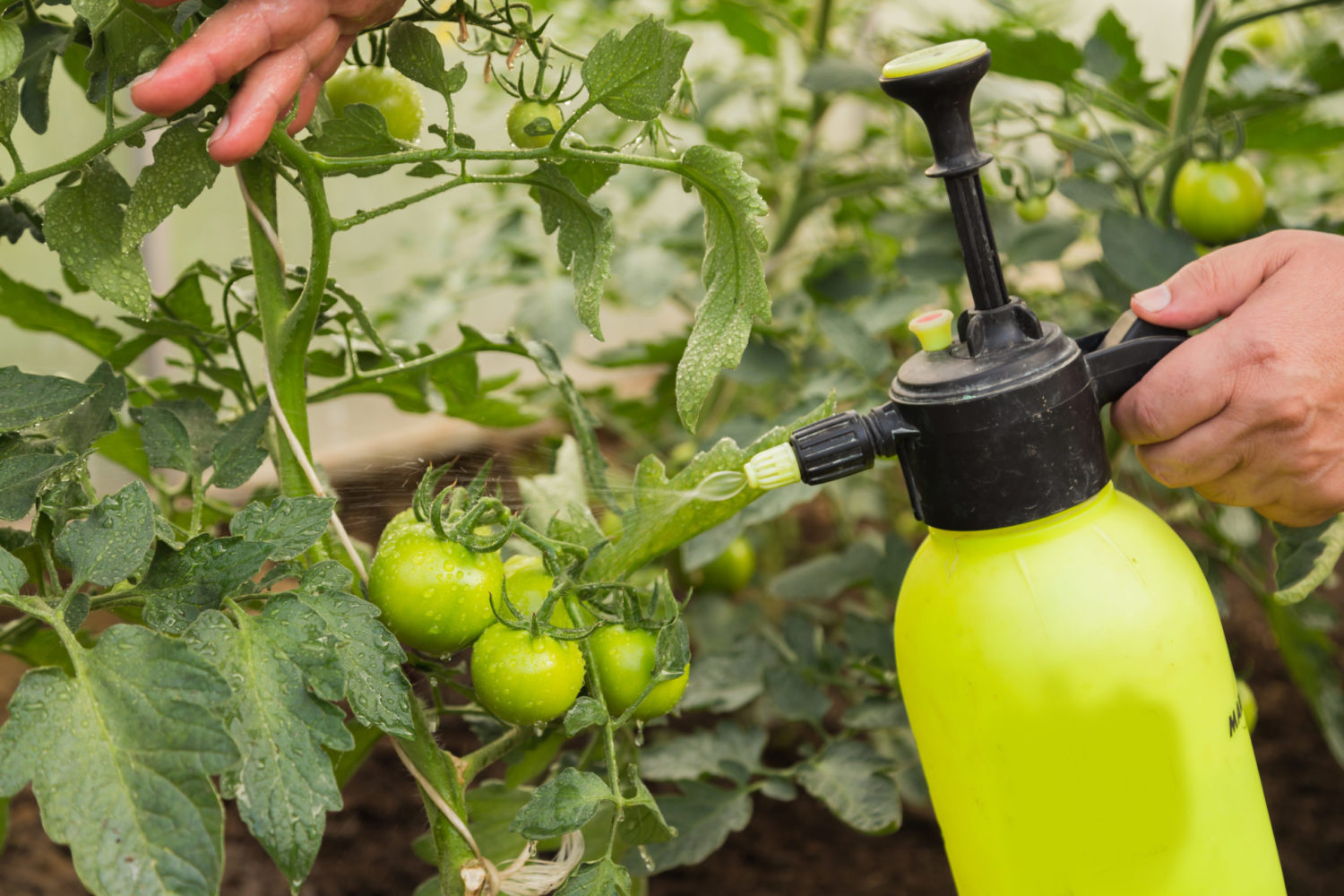Home>Gardening News and Trends>What Is Balanced Fertilizer


Gardening News and Trends
What Is Balanced Fertilizer
Published: August 5, 2023
Stay updated with the latest news on balanced fertilizer. Find out what it is and why it is essential for healthy plant growth.
(Many of the links in this article redirect to a specific reviewed product. Your purchase of these products through affiliate links helps to generate commission for Chicagolandgardening.com, at no extra cost. Learn more)
Table of Contents
Introduction
Welcome to our comprehensive guide on balanced fertilizer, a crucial element in the realm of agriculture and gardening. In this article, we will explore what balanced fertilizer is and its significance in promoting healthy plant growth. Whether you are a seasoned farmer or an amateur gardener, understanding the importance of balanced fertilizer can greatly impact the productivity and vitality of your plants.
But what exactly is balanced fertilizer? While the concept may seem straightforward, many individuals are unaware of the precise composition and benefits that come with using this type of fertilizer. To simplify, balanced fertilizer is a blend that provides plants with the essential macro and micronutrients they need to thrive.
In the following sections, we will delve into the components of a well-balanced fertilizer and the role each element plays in supporting plant growth. We will also explore the benefits of using balanced fertilizer, as well as the proper application methods to ensure optimal results.
Whether you are growing fruits and vegetables, cultivating a lush garden, or maintaining a beautiful lawn, the knowledge and application of balanced fertilizer can significantly impact the health and productivity of your plants. By providing the right nutrients in the right ratios, you can create an environment where plants can flourish, leading to bountiful harvests, vibrant flowers, and healthy greenery.
So, let’s dive in and uncover the world of balanced fertilizer, unlocking the secrets to a thriving and successful garden.
Definition of Balanced Fertilizer
Before we delve deeper into the world of balanced fertilizer, it is essential to establish a clear understanding of what it actually means. In its simplest terms, balanced fertilizer refers to a type of fertilizer that contains a proportional blend of essential nutrients required for optimal plant growth.
A well-balanced fertilizer typically contains three primary macronutrients: nitrogen (N), phosphorus (P), and potassium (K), also known as NPK. These macronutrients are vital for plant health and are usually represented by three numbers on the fertilizer packaging, indicating the ratio of each nutrient present.
The ideal ratio of NPK may vary depending on the specific plant or crop being grown, as different species have varying nutritional needs. However, a common balanced fertilizer ratio is 10-10-10, which means it contains 10% nitrogen, 10% phosphorus, and 10% potassium.
In addition to the NPK ratio, a balanced fertilizer may also include secondary nutrients such as calcium (Ca), magnesium (Mg), and sulfur (S), as well as micronutrients like iron (Fe), manganese (Mn), zinc (Zn), copper (Cu), molybdenum (Mo), boron (B), and chlorine (Cl). These secondary nutrients and micronutrients are essential for the overall health and vitality of plants, even though they are required in smaller quantities.
The key purpose of using balanced fertilizer is to provide plants with a complete and well-rounded nutrient profile. By supplying the necessary macronutrients, secondary nutrients, and micronutrients in the right proportions, balanced fertilizer helps to address any deficiencies and ensures that plants receive all the necessary elements for healthy growth, development, and productivity.
It’s important to note that using an unbalanced fertilizer, meaning a fertilizer with an imbalanced or disproportionate nutrient ratio, can have adverse effects on plants. Applying too much nitrogen can result in excessive foliage growth but minimal fruiting or flowering. Insufficient phosphorus can lead to poor root development, while inadequate potassium can result in weakened disease resistance and compromised overall plant health.
In the next sections, we will explore each component of balanced fertilizer in more detail, uncovering the role they play in supporting plant growth, and explaining why they are vital for achieving optimal results.
Importance of Balanced Fertilizer
Using balanced fertilizer is of utmost importance in the world of agriculture and gardening. It serves as a vital tool for promoting healthy plant growth and maximizing yields. Let’s explore the key reasons why balanced fertilizer is crucial for plant health and productivity.
1. Provides Essential Nutrients: Balanced fertilizer contains a well-rounded blend of essential nutrients, including nitrogen, phosphorus, potassium, secondary nutrients, and micronutrients. These nutrients are vital for plant development, playing critical roles in photosynthesis, root growth, flower and fruit production, and overall plant health.
2. Addresses Nutrient Deficiencies: Different plants have varying nutrient requirements. By using balanced fertilizer, you can ensure that plants receive all the necessary nutrients in the right proportions. This helps to address nutrient deficiencies, preventing stunted growth, yellowing leaves, and other symptoms associated with nutrient imbalances.
3. Promotes Strong Root Development: Phosphorus, one of the key components of balanced fertilizer, plays a crucial role in root development. It helps plants develop a robust and extensive root system, enabling them to absorb water and nutrients efficiently. Strong roots contribute to overall plant health and resilience.
4. Enhances Flowering and Fruiting: Balanced fertilizer, with its optimal nutrient ratios, supports the production of vibrant flowers and abundant fruits. Nitrogen promotes lush foliage, phosphorus aids in flower formation and fruiting, and potassium enhances fruit quality and disease resistance.
5. Boosts Plant Health and Disease Resistance: Balanced fertilizer not only provides essential nutrients but also helps enhance plant health and resilience. Nutrients like calcium and magnesium improve plant cell structure and function, strengthening their ability to withstand stress and disease.
6. Maximizes Crop Yields: By providing plants with the optimal blend of nutrients, balanced fertilizer maximizes crop yields and productivity. It ensures that plants have all the necessary resources for robust growth, which translates into plentiful harvests for farmers and bountiful produce for home gardeners.
7. Environmentally Friendly: Using balanced fertilizer in appropriate amounts helps prevent nutrient runoff and pollution of water bodies. By providing plants with the nutrients they need and minimizing excess, it reduces the risk of nutrient leaching and environmental damage.
In summary, utilizing balanced fertilizer is essential for maintaining plant health, promoting vigorous growth, and maximizing yields. Whether you are cultivating a small garden or managing a large-scale agricultural operation, incorporating balanced fertilizer into your plant care regimen is an integral part of achieving success and reaping the rewards of a thriving garden or farm.
Components of Balanced Fertilizer
A well-balanced fertilizer is composed of various essential components, each playing a crucial role in promoting healthy plant growth. Let’s explore the key components of a balanced fertilizer and understand their significance in supporting plant development.
1. Nitrogen (N): Nitrogen is an essential macronutrient that plays a critical role in promoting vigorous plant growth. It is responsible for leaf and stem development, as well as the formation of proteins, enzymes, and chlorophyll. Balanced fertilizer typically contains a significant amount of nitrogen to support healthy foliage and ensure lush plant growth.
2. Phosphorus (P): Phosphorus is another essential macronutrient found in balanced fertilizer. It is essential for root development, flower formation, and fruit production. Phosphorus aids in energy transfer within plants and plays a critical role in DNA synthesis and cell division. It is crucial for establishing a strong root system and promoting overall plant health.
3. Potassium (K): Potassium is a macronutrient that helps plants in various ways. It regulates plant water uptake, enhances disease resistance, and improves overall plant vigor. Potassium plays a vital role in nutrient transportation within plants and contributes to the quality and flavor of fruits and vegetables.
4. Secondary Nutrients: In addition to the primary macronutrients (NPK), a balanced fertilizer may also contain secondary nutrients. These include calcium (Ca), magnesium (Mg), and sulfur (S). Secondary nutrients are required in moderate amounts and play important roles in plant nutrition. Calcium promotes cell wall strength, magnesium aids in chlorophyll production, and sulfur is involved in enzyme activity and nitrogen metabolism.
5. Micronutrients: Micronutrients are essential elements that plants require in small quantities. Balanced fertilizer often includes micronutrients such as iron (Fe), manganese (Mn), zinc (Zn), copper (Cu), molybdenum (Mo), boron (B), and chlorine (Cl). Although plants only need these micronutrients in trace amounts, they perform vital functions in various physiological processes, including enzyme activation, photosynthesis, and nutrient absorption.
Each component of balanced fertilizer contributes to the overall health, growth, and productivity of plants. The combination of nitrogen, phosphorus, potassium, secondary nutrients, and micronutrients ensures that plants receive the necessary elements in the right quantities and proportions. This balanced nutrient profile supports optimal plant growth, strengthens disease resistance, and enhances the overall vitality of plants.
Now that we have a clear understanding of the components of balanced fertilizer, let’s explore the benefits of using such fertilizers in more detail.
Nitrogen
Nitrogen is a vital nutrient found in balanced fertilizer that plays a pivotal role in promoting healthy plant growth. It is an essential macronutrient required in relatively larger quantities compared to other nutrients. Let’s explore the significance of nitrogen and how it contributes to plant development.
1. Foliage Growth: Nitrogen is primarily responsible for stimulating leaf and stem development in plants. It is a key component of chlorophyll, the pigment that gives plants their green color and aids in photosynthesis. The presence of nitrogen in balanced fertilizer ensures that plants have an adequate supply of this essential nutrient to produce lush, vibrant foliage.
2. Protein Synthesis: Nitrogen is a critical element in protein synthesis, which is necessary for various plant functions. Proteins play a crucial role in cell growth, enzyme production, and the overall structure and functioning of plants. By providing plants with nitrogen through balanced fertilizer, it ensures that they have the necessary building blocks for protein production and plant growth.
3. Nutrient Transport: Nitrogen is involved in the transport and distribution of other nutrients within plants. It helps facilitate the movement of other essential nutrients, such as phosphorus and potassium, from the roots to other parts of the plant, ensuring that all areas receive the necessary elements for optimal growth.
4. Crop Yield and Quality: The presence of sufficient nitrogen in the soil is crucial for maximizing crop yields. It promotes vigorous growth, leading to higher productivity. Additionally, nitrogen contributes to the quality of harvested crops. Fruits and vegetables grown with adequate nitrogen levels tend to have better color, flavor, and nutritional value.
5. Environmental Impact: While nitrogen is essential for plant growth, it is important to consider its environmental impact. Excessive use of nitrogen-based fertilizers can lead to nutrient runoff, which can contaminate water bodies and contribute to water pollution. Therefore, it is essential to apply nitrogen in appropriate amounts and in a responsible manner.
When using balanced fertilizer, it is important to consider the specific nitrogen requirements of different plants. Some plants, such as leafy greens and grasses, have higher nitrogen needs, while others, like flowering plants and fruit-producing crops, require a more balanced ratio of nitrogen to phosphorus and potassium.
Understanding the role of nitrogen and its significance in plant growth allows gardeners and farmers to make informed decisions about the application of balanced fertilizer. By providing plants with the right amount of nitrogen, we can ensure their healthy development, robust foliage growth, and optimal productivity.
Phosphorus
Phosphorus is an essential macronutrient found in balanced fertilizers that plays a vital role in supporting plant growth and development. It is involved in numerous physiological processes within plants, contributing to their overall health and productivity. Let’s delve into the significance of phosphorus and how it benefits plants.
1. Root Development: Phosphorus is crucial for the development of strong and healthy root systems. It aids in root initiation and elongation, allowing plants to establish a robust foundation for nutrient absorption and water uptake. Adequate phosphorus levels in balanced fertilizer promote vigorous root growth, improving a plant’s ability to access essential resources from the soil.
2. Energy Transfer: Phosphorus plays a key role in energy transfer within plants. It is involved in the conversion of sunlight into chemical energy during photosynthesis, enabling plants to produce carbohydrates and build necessary organic compounds. This energy transfer process is essential for plant growth, development, and the synthesis of DNA and other vital components.
3. Flower and Fruit Production: Phosphorus directly influences a plant’s reproductive processes, including flower formation and fruit production. It is particularly important during the early stages of flowering, as it promotes bud initiation and enhances flower quality and quantity. Phosphorus also contributes to the development of healthy seeds and plays a crucial role in the maturation and ripening of fruits.
4. Disease Resistance: Phosphorus helps strengthen a plant’s natural defense mechanisms against diseases and pests. It plays a role in the synthesis of compounds involved in plant immunity, such as phytoalexins and pathogenesis-related proteins. Adequate phosphorus levels in balanced fertilizer improve a plant’s ability to withstand diseases, resulting in healthier and more resilient plants.
5. Nutrient Availability: Phosphorus plays a critical role in the uptake and utilization of other essential nutrients by plants. It aids in the conversion of nitrogen into a usable form for plant uptake and enhances the efficiency of nutrient absorption. Balanced fertilizer with sufficient phosphorus content ensures that plants can access and utilize all the necessary nutrients for optimal growth and development.
It’s important to note that while phosphorus is essential for plant growth, excessive phosphorus levels can lead to environmental issues such as nutrient runoff and water pollution. Therefore, it is crucial to apply phosphorus-containing fertilizers according to plant requirements and in a responsible and sustainable manner.
By including phosphorus in balanced fertilizer, gardeners and farmers can ensure that their plants receive adequate levels of this essential nutrient. This enhances root development, promotes energy transfer, boosts flower and fruit production, strengthens disease resistance, and improves overall plant health. Understanding the role of phosphorus in plant nutrition empowers growers to make informed decisions and optimize the growth and productivity of their plants.
Potassium
Potassium is a vital macronutrient found in balanced fertilizers that plays a crucial role in supporting plant growth and overall plant health. It is involved in numerous physiological processes in plants and contributes to their resilience, vitality, and productivity. Let’s delve into the significance of potassium and how it benefits plants.
1. Osmotic Regulation: Potassium plays a pivotal role in the osmotic regulation of plants. It regulates the movement of water and nutrients within plant cells, ensuring optimal cell turgor and balancing water uptake and loss. Adequate levels of potassium in balanced fertilizer help plants withstand drought conditions and maintain cell integrity, allowing them to thrive even in challenging environmental conditions.
2. Enzyme Activation: Potassium is essential for activating numerous enzymes within plants. These enzymes are involved in various metabolic processes, including photosynthesis, protein synthesis, and carbohydrate metabolism. By providing plants with sufficient potassium through balanced fertilizer, enzyme activity is enhanced, leading to improved plant growth and overall performance.
3. Nutrient Translocation: Potassium facilitates the movement of other essential nutrients within plants. It aids in the translocation of sugars, carbohydrates, and other organic compounds from the leaves to other plant parts, such as fruits and tubers. This nutrient translocation ensures the proper distribution of energy and resources, contributing to the growth and development of various plant organs.
4. Disease Resistance: Potassium plays a vital role in enhancing a plant’s natural defense mechanisms against diseases and stress. It strengthens cell walls, making plants more resistant to fungal and bacterial infections. Additionally, potassium helps activate defense-related genes, producing antimicrobial compounds that protect plants from pathogens and boost their overall disease resistance.
5. Fruit Quality and Storability: Potassium is instrumental in improving the quality and storability of fruits and vegetables. Adequate potassium levels in balanced fertilizer contribute to enhanced fruit color, flavor, and texture. Additionally, potassium regulates the opening and closing of stomata, allowing for better gas exchange, thus improving the shelf life and post-harvest quality of produce.
It’s important to note that excessive potassium levels can have adverse effects on plants, such as inhibiting the uptake of other essential nutrients. Therefore, it is crucial to use balanced fertilizer with a proper potassium-to-nitrogen ratio to promote optimal plant growth and prevent nutrient imbalances.
By including potassium in balanced fertilizer, gardeners and farmers can ensure that their plants receive sufficient levels of this essential nutrient. This supports osmotic regulation, activates enzymes, facilitates nutrient translocation, enhances disease resistance, and improves fruit quality and storability. Understanding the role of potassium in plant nutrition empowers growers to optimize the growth, health, and productivity of their plants.
Secondary Nutrients
In addition to the primary macronutrients (nitrogen, phosphorus, and potassium), balanced fertilizers also include secondary nutrients that play important roles in supporting plant growth and development. While required in smaller quantities compared to macronutrients, these secondary nutrients are nonetheless essential in maintaining the overall health and vitality of plants. Let’s explore the significance of secondary nutrients in plant nutrition.
1. Calcium (Ca): Calcium is essential for plant cell wall formation and stability. It strengthens cell walls, improving plant structure and resilience. Adequate calcium levels in balanced fertilizer help prevent disorders such as blossom end rot in tomatoes and tip burn in leafy vegetables. Calcium also promotes root development, nutrient uptake, and enzyme activation within plants.
2. Magnesium (Mg): Magnesium is an essential component of chlorophyll, the pigment responsible for photosynthesis. It plays a crucial role in the production of energy-rich compounds, such as ATP (adenosine triphosphate). Adequate magnesium levels in balanced fertilizer ensure efficient photosynthesis, contributing to the production of carbohydrates and overall plant growth.
3. Sulfur (S): Sulfur is involved in various essential processes within plants. It is required for the synthesis of proteins and vitamins, as well as the formation of enzymes and the activation of some hormones. Sulfur also plays a role in the structure and function of certain amino acids, contributing to plant growth, root development, and overall plant health.
These secondary nutrients are integral to supporting the overall nutritional needs of plants. While they may not be required in large quantities, their absence or deficiency can lead to various plant disorders and stunted growth. By including these secondary nutrients in balanced fertilizers, growers can ensure that plants receive all the necessary elements for optimal growth, development, and productivity.
It is important to note that the availability of secondary nutrients may vary depending on soil conditions and pH levels. Regular soil testing is recommended to identify any deficiencies and determine the appropriate amounts of secondary nutrients to apply. By understanding the role of secondary nutrients in plant nutrition, growers can address any deficiencies and create an optimal nutrient balance for healthy plant growth.
Micronutrients
In addition to the primary macronutrients (nitrogen, phosphorus, and potassium) and secondary nutrients (calcium, magnesium, and sulfur), balanced fertilizers also incorporate micronutrients that are essential for plant growth and development. Micronutrients, required in smaller quantities, play critical roles in various physiological processes within plants. Let’s explore the significance of micronutrients in plant nutrition.
1. Iron (Fe): Iron is essential for chlorophyll production and plays a vital role in photosynthesis. It helps plants convert sunlight into chemical energy, enabling them to produce carbohydrates and supply energy to various biochemical reactions. Adequate iron levels in balanced fertilizer ensure healthy green foliage and proper plant growth.
2. Manganese (Mn): Manganese is involved in enzyme activation and plays a key role in photosynthesis and the breakdown of carbohydrates. It helps plants utilize nitrogen and aids in the synthesis of amino acids and proteins. Manganese also contributes to chlorophyll production and helps protect plants against oxidative stress.
3. Zinc (Zn): Zinc is crucial for enzyme activity and overall plant metabolism. It plays a role in the synthesis of growth hormones, protein formation, and carbohydrate metabolism. Adequate zinc levels in balanced fertilizer contribute to healthy root development, proper plant growth, and improved nutrient uptake.
4. Copper (Cu): Copper is involved in various enzymatic reactions within plants. It plays a role in chlorophyll production and lignin synthesis, contributing to plant growth and development. Copper is also important for the formation of reproductive structures, such as flowers and seeds.
5. Molybdenum (Mo): Molybdenum is essential for nitrogen metabolism within plants. It enables plants to convert and utilize nitrogen in various forms, promoting efficient nitrogen uptake and utilization. Adequate molybdenum levels in balanced fertilizer are crucial for healthy plant growth and nitrogen fixation.
6. Boron (B): Boron is involved in several plant processes, including cell wall formation, pollen germination, and fruit development. It aids in the movement of sugars within plants and participates in the metabolism of carbohydrates and the utilization of calcium. Adequate boron levels in balanced fertilizer contribute to proper pollination, fruit set, and overall plant growth.
7. Chlorine (Cl): Chlorine is mainly involved in photosynthesis, as it provides the necessary chloride ions for optimal plant functioning. It helps plants regulate stomatal opening and closing, influencing gas exchange and maintaining proper water balance.
While micronutrients are required in smaller quantities, they are nonetheless critical for plant health and growth. A balanced fertilizer that includes these micronutrients ensures that plants receive the necessary elements for optimal physiological functions, maximizing their growth, productivity, and overall resilience.
When using balanced fertilizer, it is essential to consider the specific micronutrient requirements of different plant species and the characteristics of the soil being used. Soil testing can help identify any micronutrient deficiencies or imbalances, allowing growers to tailor the fertilizer application accordingly and provide the ideal micronutrient support for their plants.
Benefits of Using Balanced Fertilizer
Using balanced fertilizer offers numerous benefits for gardeners, farmers, and anyone involved in plant cultivation. Let’s explore the advantages of incorporating balanced fertilizer into your plant care regimen.
1. Optimal Nutrient Supply: Balanced fertilizer provides plants with a complete and well-rounded nutrient profile. By including the necessary macro and micronutrients in the right ratios, it ensures that plants have access to all the essential elements they need for healthy growth and development.
2. Addressing Nutrient Deficiencies: Balanced fertilizer helps address nutrient deficiencies in plants. Nutrient imbalances can lead to stunted growth, yellowing leaves, poor fruiting, and overall poor plant health. By using balanced fertilizer, growers can provide their plants with the necessary nutrients to rectify any deficiencies and ensure optimal health.
3. Improved Plant Growth and Productivity: The optimal nutrient composition of balanced fertilizer promotes healthy plant growth and maximizes productivity. Plants supplied with the right nutrients in the right proportions experience improved foliage development, stronger roots, vibrant flowers, and abundant fruits or vegetables. This leads to higher crop yields and increased garden beauty and productivity.
4. Disease Resistance: Balanced fertilizer can enhance a plant’s disease resistance. By providing plants with the necessary nutrients, especially secondary nutrients like calcium and magnesium, it helps strengthen cell walls and improve plant immunity against diseases and pests. This results in healthier and more resilient plants that are better equipped to fend off diseases and damage.
5. Environmental Benefits: Using balanced fertilizer in appropriate amounts helps minimize nutrient runoff and environmental pollution. By providing plants with the necessary nutrients without excessive use, it reduces the risk of nutrient leaching into groundwater and the contamination of water bodies. This promotes environmentally friendly and sustainable gardening and farming practices.
6. Enhanced Soil Health: Balanced fertilizer helps maintain or improve soil fertility and health. It replenishes essential nutrients that may be depleted over time, ensuring the soil remains rich in nutrients. Additionally, the inclusion of organic matter in some balanced fertilizers can improve soil structure, water retention, and microbial activity, promoting overall soil health and nutrient cycling.
7. Customizable Application: Balanced fertilizer allows for customization based on the specific needs of different plants and crops. By adjusting the ratios and amounts of nutrients in the fertilizer, growers can ensure that each plant receives the optimal nutrition it requires, regardless of its growth stage or nutritional demands.
In summary, using balanced fertilizer provides a wide range of benefits, including optimal nutrient supply, addressing nutrient deficiencies, improved plant growth and productivity, enhanced disease resistance, environmentally friendly practices, improved soil health, and customizable application. By incorporating balanced fertilizer into your plant care routine, you are setting the stage for healthy, resilient, and thriving plants.
How to Apply Balanced Fertilizer
Applying balanced fertilizer correctly is crucial to ensure that plants receive the necessary nutrients for optimal growth and development. Here are some guidelines to follow when applying balanced fertilizer:
1. Soil Testing: Before applying any fertilizer, it’s recommended to conduct a soil test. This will help determine the nutrient levels in the soil and identify any deficiencies or imbalances. Soil tests provide valuable information for selecting the appropriate balanced fertilizer and determining the application rates.
2. Follow the Recommended Dosage: Balanced fertilizers come with instructions on the package regarding the recommended dosage and application rate. It’s important to follow these guidelines to avoid overapplication, which can lead to nutrient imbalances, environmental issues, and potential damage to plants.
3. Timing: The timing of fertilizer application can vary depending on the type of plant and the growth stage. In general, it’s beneficial to apply balanced fertilizer before planting or during periods of active growth. This ensures that plants have access to the necessary nutrients as they require them for optimal development.
4. Placement: The correct placement of balanced fertilizer is essential for efficient nutrient uptake. For most plants, it’s best to apply the fertilizer directly to the soil near the root zone. This allows the plant roots to absorb the nutrients effectively. For container plants, ensure even distribution of the fertilizer throughout the potting mix.
5. Incorporation: After applying the balanced fertilizer to the soil, gently incorporate it into the top layer using a rake or garden fork. This helps ensure that the nutrients are evenly distributed and readily available to plant roots. Avoid deep placement as it may hinder nutrient absorption and potentially burn plant roots.
6. Watering: Following fertilizer application, provide adequate water to help dissolve and distribute the nutrients within the soil. Watering also helps prevent nutrient buildup and reduces the risk of fertilizer burn. Additionally, regular watering throughout the growing season ensures a steady supply of moisture for nutrient absorption.
7. Monitor and Adjust: Regularly monitor the plants for any signs of nutrient deficiencies or excessive nutrient levels. By observing the plant’s overall health, growth, and appearance, you can make necessary adjustments to the fertilizer application if needed. This may include increasing or decreasing dosage, or adjusting the fertilizer’s composition based on plant requirements.
Remember, using balanced fertilizer is just one component of a comprehensive plant care routine. It is important to consider other factors such as light, temperature, water, and pest control to ensure the overall health and success of your plants.
By following these guidelines for applying balanced fertilizer, you can optimize nutrient uptake, promote healthy plant growth, and maximize the benefits of using balanced fertilizer for your plants.
Conclusion
In conclusion, balanced fertilizer is a key tool for promoting healthy plant growth and maximizing yields. By providing plants with the necessary macronutrients (nitrogen, phosphorus, and potassium), secondary nutrients, and micronutrients, balanced fertilizer ensures that plants receive a comprehensive and well-rounded nutrient profile.
Using balanced fertilizer offers numerous benefits, such as addressing nutrient deficiencies, promoting optimal plant growth, enhancing disease resistance, improving fruit quality, and supporting environmental sustainability. By supplying plants with the right nutrients in the right proportions, growers can create an environment where plants can thrive and flourish.
When applying balanced fertilizer, it’s important to consider factors such as soil testing, following recommended dosage, proper timing and placement, and regular monitoring of plant health. By adopting these practices, growers can effectively optimize nutrient uptake and prevent nutrient imbalances.
However, it’s important to note that every plant has unique nutrient requirements, and it’s crucial to tailor the fertilizer application based on specific plant needs. Regular observation and adjustments will help ensure that plants receive the optimal nutrition for their growth and development.
By incorporating balanced fertilizer into your plant care routine, whether you are a gardener or a farmer, you can lay the foundation for healthy, productive, and thriving plants. Your efforts will be rewarded with bountiful harvests, vibrant blooms, and lush greenery that will bring beauty and satisfaction to your gardening endeavors.
So, get started with balanced fertilizer and unlock the potential for a flourishing garden or farm, transforming your plants into healthy and resilient specimens that will delight you and those who enjoy the fruits of your labor.










